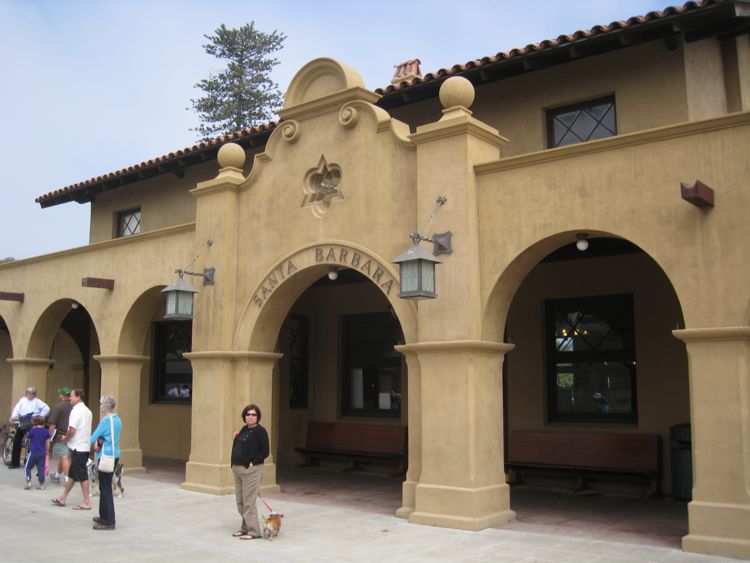We Have Arrived In Santa Barbara (Page Four)

The crew hangs out between cars since it is very cool and they work so hard!

We felt a little special with this sign
Santa Barbara!
Did You Know? - The history of the city begins at least 13,000 years ago with the ancestors of the present-day Chumash. Evidence for a Paleoindian presence includes a fluted Clovis-like point found in the 1980s along the western Santa Barbara County coast, as well as the remains of Arlington Springs Man, found on Santa Rosa Island in the 1960s. Approximately 8,000 to 10,000 Chumash lived on the south coast of Santa Barbara County when Portuguese explorer João Cabrilho sailed through the Santa Barbara Channel in 1542, anchoring briefly in the area. In 1602 Sebastian Vizcaino gave the name "Santa Barbara" to the region, in gratitude for having survived a violent storm in the Channel on December 3, the eve of the feast day of that saint.

We be here!

Careful! SPLAT!

Check out the shoes!

He just bounces out

Yeah! We made it!

Hi there!
Did You Know? - It is said that the Roman emperor Nero liked to watch gladiator fights with emeralds. These, however, appear to have worked rather like mirrors.[2] Flat panes of smoky quartz which offered no corrective powers but did protect the eyes from glare were used in China in the 12th century or possibly earlier. Contemporary documents describe the use of such crystals by judges in Chinese courts to conceal their facial expressions while questioning witnesses.
James Ayscough began experimenting with tinted lenses in spectacles in the mid-18th century, around 1752. These were not "sunglasses" as such; Ayscough believed blue- or green-tinted glass could correct for specific vision impairments. Protection from the sun's rays was not a concern for him.
Yellow/amber and brown-tinted spectacles were also a commonly-prescribed item for people with syphilis in the 19th[dubious – discuss] and early 20th centuries because sensitivity to light was one of the symptoms of the disease.
In prehistoric and historic time, Inuit peoples wore flattened walrus ivory "glasses," looking through narrow slits to block harmful reflected rays of the sun

Safe on the ground

"Balmy weather, what!"

"Where is the vine?"
Our Train Heads North

San Luis Obispo here we come

We will return in about six hours
We Be Here... Now What?

Now what?

